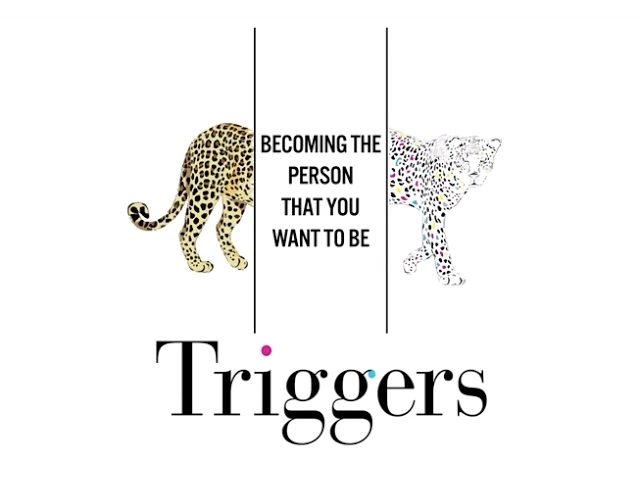Triggers by Marshall Goldsmith Book Summary
Have you ever tried to change your own behavior? For example – eating healthier, exercising more, watching less TV, spending more time with a family member, staying calm in day-to-day interactions, etc. Think about your last attempt to change your behavior to achieve any one of these goals? How did it go? Were you successful? I am willing to bet that the answer is no. Changing our ingrained behaviors and habits is one of the most difficult things to do.
Why is behavior change for adults so difficult? Triggers by Marshall Goldsmith’s book summary will clarify the reasons we don’t become the person we dream of becoming. In his bestselling book titled “Triggers: Creating Behavior That Lasts-Becoming the Person You Want to Be” author Marshall Goldsmith attempts to find answers to the puzzle, like how to change our own behaviors to become the person we want to become.
I will explore the book Triggers by Marshall Goldsmith Book and summarize the main ideas. Marshall Goldsmith is the number one executive coach to top CEOs from Fortune 500 companies and has helped them change and become better leaders. In his bestselling book titled “Triggers: Creating Behavior That Lasts-Becoming the Person You Want to Be” author Marshall Goldsmith attempts to find answers to the puzzle, like how to change our own behaviors to become the person we want to become.
Why don’t we do what we know we want to do? Get in shape, spend more time with our families, learn new skills, achieve personal and career growth, be more patient, etc. We carry these wishes and dreams with us for years, and we really want to achieve them. Why don’t we become the person we dream of becoming? Why can’t we get ourselves to do all the things that are required to achieve these dreams? Why is behavior change for adults so difficult?
[lwptoc title=”Table of Content: Click to jump to a specific section” titleFontSize=”150%” itemsFontSize=”105%” colorScheme=”inherit” skipHeadingLevel=”h1,h6″]
In Triggers by Marshall Goldsmith Book Summary, I will share a few ideas that I found very useful
A trigger is any stimulus that affects our behavior. We are often unaware or underestimate the effect that the triggers in our environment and our beliefs create on our behavior.
Although self-improvement literature may make it sound very easy, behavior change is one of the most difficult things for human beings to achieve. Because no one can change the behavior of a reasonably successful and comfortable adult unless they themselves want to change.
Belief triggers that prevent lasting change – from Triggers by Marshall Goldsmith Book Summary
- If I understand, I will do knowing hardly ever translates into doing. We know a lot of things we should do but somehow we rarely do it.
- I have willpower and won’t give in to temptation. – We often overestimate our willpower and underestimate the power of triggers in our environment to tempt us away from our good behavior.
- I can do it on my own, and I don’t need help or structure. We harbor the wish and make futile attempts to exercise more and get fit. Although our track record says that we can’t do it on our own, we are hesitant to ask for help or structure. Hiring a personal trainer will help provide the much-needed help and structure and increase our chances of success by an order of magnitude.
- I have the wisdom to accurately evaluate my own behavior – Just like it is difficult to cut our own hair, it is extremely difficult for us to see our own behavior accurately. We can never be completely objective with our own selves. We need objective feedback from others on our own behaviors.
Identifying our triggers
A behavioral trigger is any stimulus that impacts our behavior. Behavioral triggers can be classified as
- direct or indirect
- internal or external
- conscious or unconscious
- anticipated or unexpected
- encouraging or discouraging
- productive or counterproductive
The last two are the most important types of triggers. If we are trying to exercise more, try to find which triggers in our environment are encouraging or discouraging, productive or counterproductive. Putting the gym gear right next to your bed is an encouraging and productive trigger to make you think about going to the gym and working out. Our large screen TVs, comfy sofas, a pantry full of junk food may be discouraging and unproductive triggers.
The power of active questions – from Triggers by Marshall Goldsmith Book Summary
Passive questions leave a wiggle room to shift the blame to situations, circumstances, and people while active questions put the responsibility on us. For instance – a passive question is Do you have clear goals? The active version of the same question is – Did I do my best to set clear goals today? This question puts the responsibility on me to do whatever is reasonably possible to set clear goals.
Ask the six active questions effective in helping us change our behaviors
- Did I do my best to set clear goals today?
- Did I do my best to make progress toward my goals today?
- Did I do my best to find meaning today?
- Did I do my best to be happy today?
- Did I do my best to build positive relationships today?
- Did I do my best to be fully engaged today?
We are over-optimistic goal setters and planners but underwhelming doers!
The daily questions allow us to raise awareness about the triggers and our own behaviors. Over time, after many reminders, we learn and adapt. We understand what works and what doesn’t and eventually change successfully.
AIWATT
We all have busy lives. Change requires time, effort, and commitment. A useful question to ask is
AIWATT – Am I Willing At This Time To ……. And fill in whatever behavior we are trying to change. If the answer is no, then let it go.
The circle of engagement

Some environmental triggers are under our control and we can reduce or eliminate them. In this connected world where we live, we are constantly bombarded by triggers. Many of them are difficult to eliminate. Advertisements, social media, societal norms, people in our lives – we cannot eliminate completely.
Here is where our awareness and choice come into play. Between stimulus and response, there is a choice. We don’t have to become the puppets of our environmental triggers – we can use our awareness and choice to pick a more constructive behavior in response to any trigger. Triggers by Marshall Goldsmith Book Summary gets its name from these environmental influences.
In conclusion – Triggers by Marshall Goldsmith Book Summary
Marshall Goldsmith’s book “Triggers: Creating Behavior That Lasts–Becoming the Person You Want to Be” is filled with nuggets of wisdom from spending a lifetime helping leaders change their behaviors. In this short article, Triggers – Marshall Goldsmith-Book Summary, I have covered a few main ideas. I highly recommend buying the book- Triggers: Creating Behavior That Lasts–Becoming the Person You Want to Be
Read summary of Marshall’s renowned book What Got You Here Won’t Get You There
Want to become a more intentional and successful person and a leader?
We offer Marshall Goldsmith coaching (based on his book Triggers and WGYHWGYT) in India, the middle east, Asia, Europe, US. It is the best coaching program in India because it is exactly the same executive coaching process used by Marshall Goldsmith to coach CEOs of Fortune 500 companies worldwide and we guarantee measurable leadership growth or you don’t pay at all.
NAL Triple Advantage Leadership Coaching.
That delivers guaranteed and measurable leadership growth. It is based on a stakeholder-centered coaching process with a 95% effectiveness rate (in a study or 11000 leaders on 4 continents). It is used by companies ranging from startups to 150 of the Fortune 500 companies to develop their leaders.
Here are some of the salient benefits of NAL Triple Advantage Leadership Coaching
Time and resource-efficient: The leader does not have to leave work to attend training programs. We go to the leader and her team. And it only takes 1.5 hours per month. The rest of the time, the leader is working to implement with her team.
Separate and customized improvement areas for each leader: Every leader is different. One size fits all approach doesn’t work. Individual development areas for each leader aligned to the business strategy.
Involves entire team: Unlike most leadership programs, NAL Triple Advantage Leadership Coaching involves the leader’s entire team, and it has a cascading effect – increasing the team effectiveness and improving organizational culture.
The leader becomes the coach: for continuous improvement for leaders themselves and their teams. It is like kaizen for your leadership development.
Cost-Effective: Our entire one-year coaching engagement often costs less than sending the leader to a short-duration leadership program at any reputed B school.
Guaranteed and measurable leadership growth: as assessed – not by us – but anonymously rated by the leader’s own team members.
Pay us only after we deliver results! : We work with many of our clients on a pay for results basis. What does it mean? If the leaders don’t improve, you simply don’t have to pay us.
Schedule an exploratory 15-minute conversation with our leadership adviser today
Click the button below.



